The 2023/24 season is expected to be a season of change for Liverpool after their unconvincing performance in the last Premier League campaign. They parted ways with a few of the players that had a lot to do with their dominance in the previous few seasons which will expectedly lead to some interchanges, if not in their overall strategy, at least in its execution.
Despite the team almost entirely meeting their xG and xGA last season, there was a noticeable change in their performance in certain areas. Their attacking efficiency had dropped, and the lower number of goals scored compared to the 2021/22 season was a logical result of a decrease in almost every indicator in possession.
The number of positional attacks had decreased as a result of the opposing teams starting to play more confidently against them and pressing them way more intensely than before. That led to a drop in the progressive passes and in their smart passing and, expectedly, to a decrease in their goalscoring opportunities.
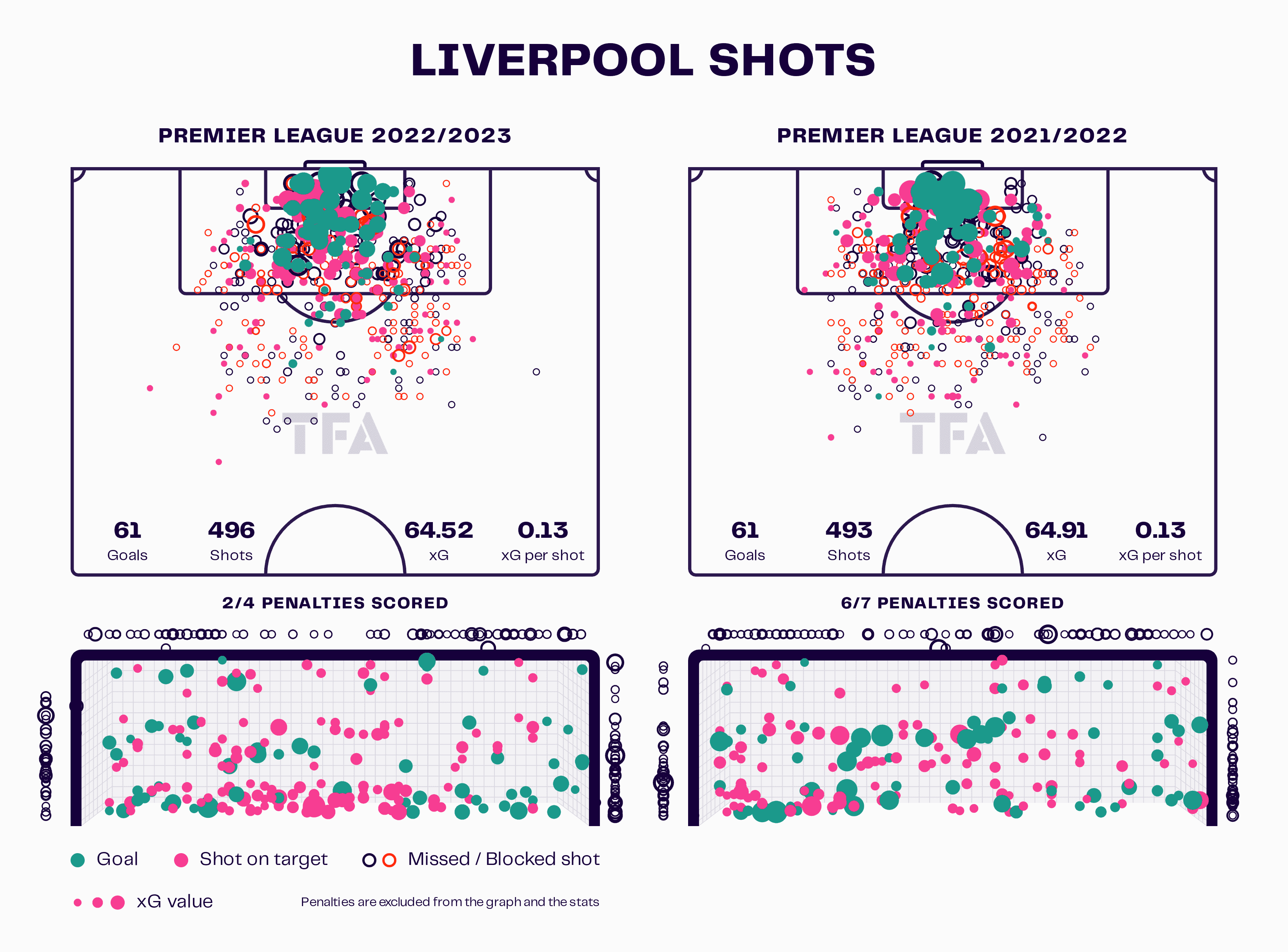
A comparison between their 2023/22 and 2022/21 shot map doesn’t show a big difference in their performance. However, the drop in their explosiveness was the most noticeable in their attacking set-plays as the team had fewer set-piece opportunities, and the result of that was scoring fewer goals last season.
The number of shots against increased compared to the previous season, while the goals conceded have almost doubled.
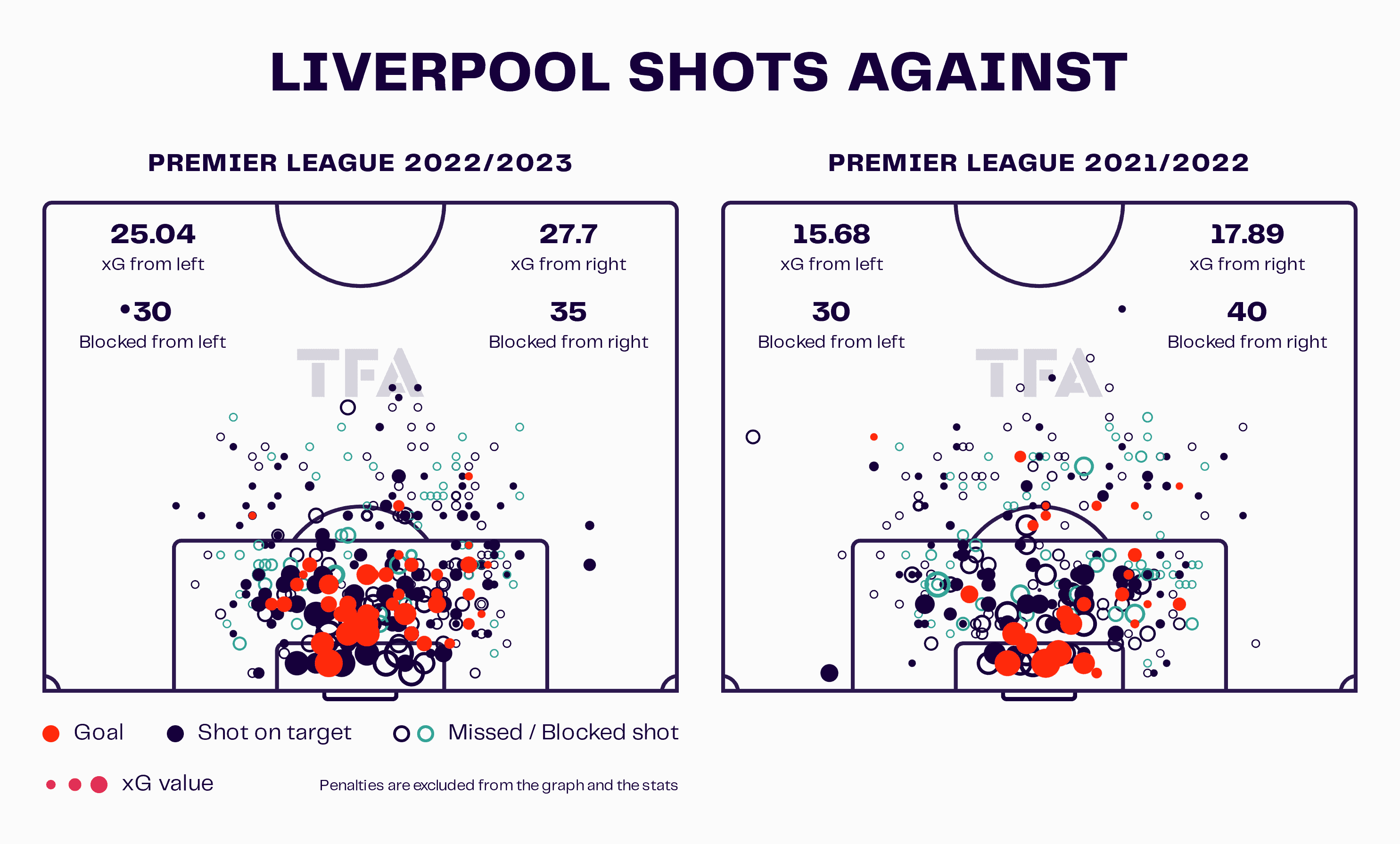
They also had more struggles in their defensive performance, which was reflected in their xGA, compared to 2022/21. Conceding more goals resulted from them allowing more spaces and the opposition having better areas to shoot from, as shown in their “shots against” map.
Jürgen Klopp was determined to rebuild his team and bring fresh additions to the squad for the new campaign. His main goal was to make sure that the departures of some of his regular starters won’t affect their performance, and he even used it as an opportunity to improve certain areas.
The main focus of the summer transfer window was the midfield. The German secured the likes of Alexis Mac Allister (from Brighton) and Dominik Szoboszlai (from RB Leipzig) in an effort to increase the dynamics and make the connection between the lines smoother. Both players fit Liverpool’s style well, with their constant contributions in the final third but also with their defensive stability as we explain further in our scout report. The team needs improvement in both directions, so their hunt for new additions continues.
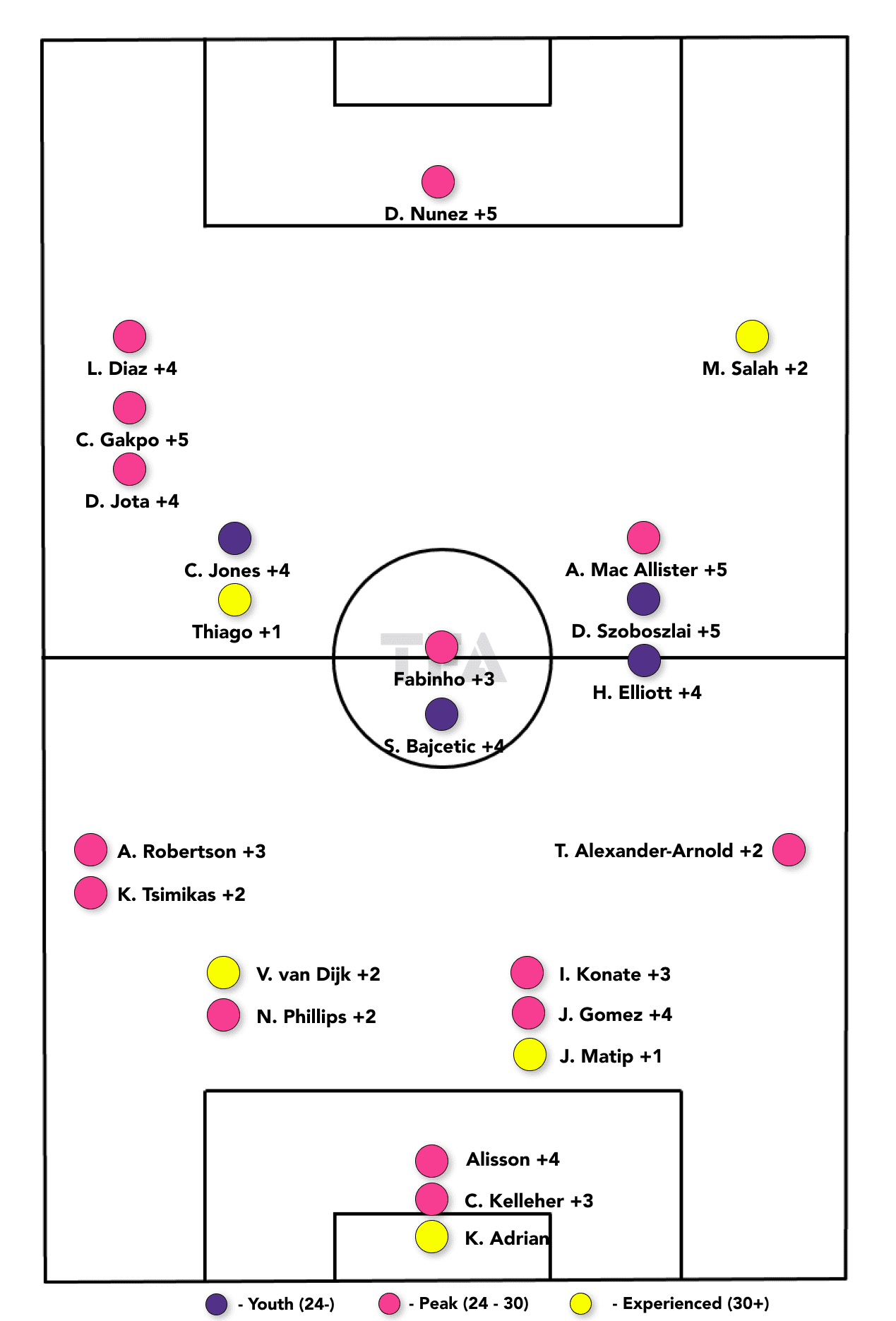
Klopp doesn’t have much depth in his squad currently as he doesn’t have backup options for many positions, making it very difficult to compete on the highest level as before. He either needs to bring another centre-forward or make up for the absence of a genuine Darwin Núñez replacement with other attack-minded players who can threaten the goal equally as successfully.
His options for the right-back are also limited, which may cause him struggles, especially if Alexander-Arnold plays in his new-found role in midfield. The Merseyside need someone who can fit their attack-minded approach but can split his attacking and defensive responsibilities well.
In terms of Liverpool’s age profile, there is a natural drop in the average age, with the departure of players like Dejan Lovren, Adam Lallana, James Milner, Sadio Mané, Firminho, Alex Oxlade-Chamberlain and others. From 30.1 average age in the 2019-20 season to 27.9 in 2022-23 and even less now.
Attacking Phase
Liverpool’s performance in attack is expected to change a bit, consisting of players with excellent technical skills in midfield. The new additions will add more explosiveness in the final third as they both can provide a threat in front of the goal.
They will continue to expose the opposition predominantly through crossing, which Szoboslai can contribute to quite significantly. His presence in the half-spaces will provide more options for creative combinations. He can equally well drag opposing players out of position and utilise the open spaces to create goalscoring opportunities. Alexander-Arnold has had an enormous impact on the goal in the last few seasons, which is expected to be even more underlined if Klopp continues to use him in a new role.
Mohamed Salah will continue to be a key figure for their success in front of the goal for both creating goalscoring opportunities and utilising them. Cody Gakpo’s influence on the left will most probably increase as his progressive runs, dribbling, crossing and shooting add edge to their attack and help the team penetrate through the left spaces. As shown below, he can easily take on opposing players and move to the half-spaces to either cross or support with through balls.
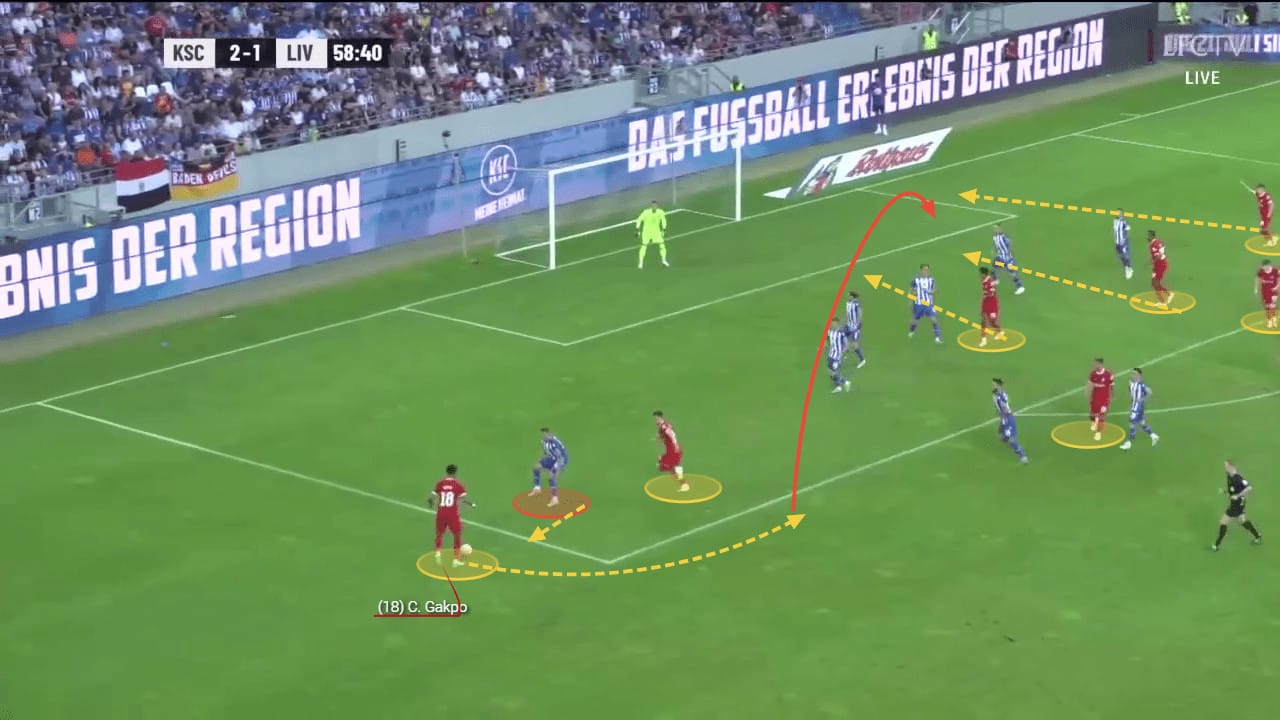
Defensive Phase
Liverpool need to improve defensively. Last term, they struggled when pressurised and were often forced into inaccurate passing and losing defensive challenges. That led to having the second-worst record in the league in terms of ball losses (102.62 p90). The Reds showed vulnerability in games where they pressed intensely and tried to dictate the tempo. Their high press often allowed their opponents to catch them off guard should they lose the ball in the advanced areas. The team conceded six goals on a counter last term.
Both full-backs Andrew Robertson and Alexander-Arnold, including Jordan Henderson in midfield, were often losing possession of the ball, which in key areas as theirs was crucial for the increase of shot frequency and accuracy against Liverpool. As shown against Southampton, the team lost the ball centrally. That led to a quick turnover and a goal after a Lavia pass. The Reds had left the left side unoccupied, which made it difficult to stop the quick counter.
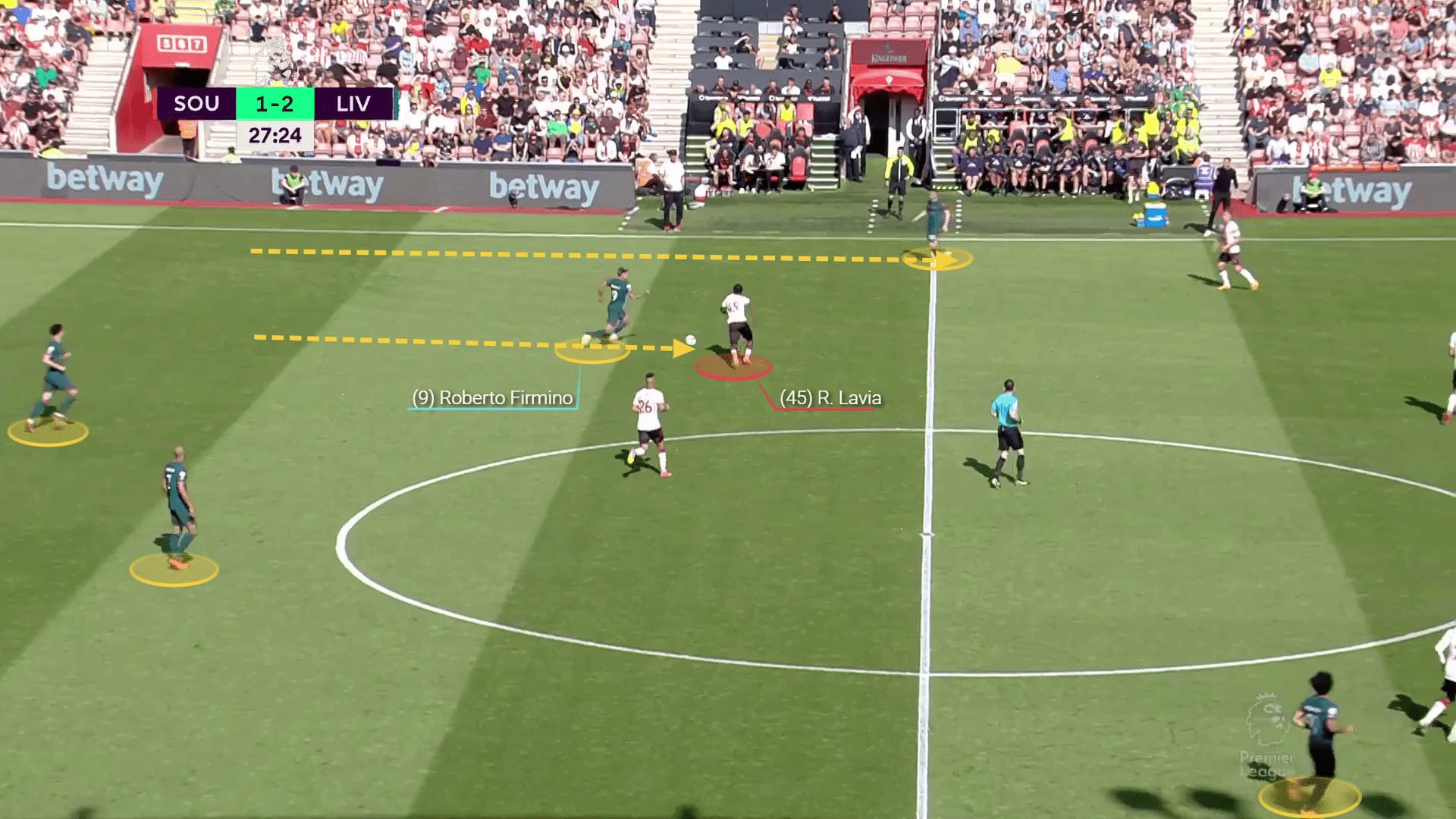
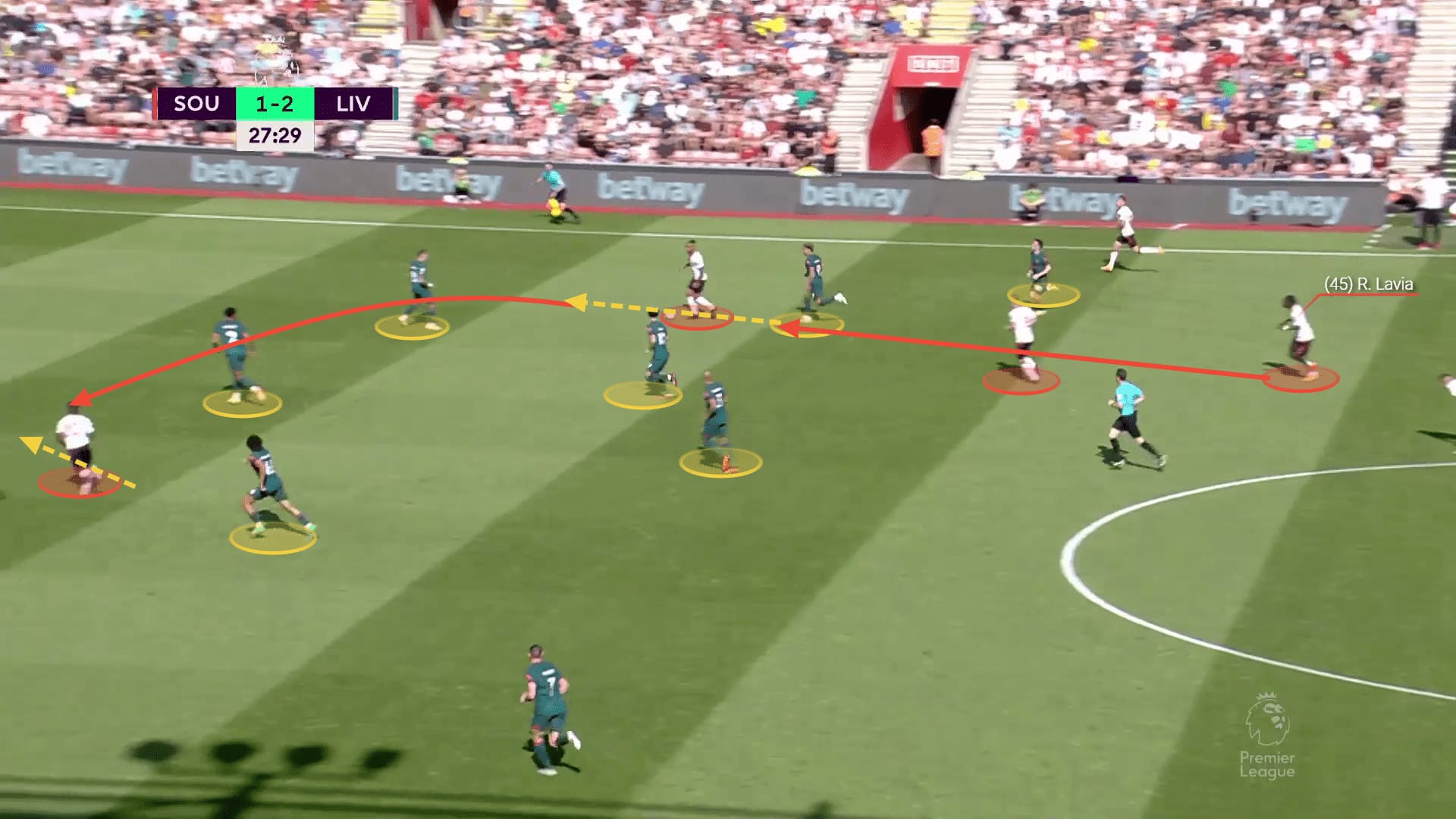
Transitions Phase
The supply to the final third is expected to increase as well as both Mac Allister and Szoboszlai are distinguished passers. Their composure and ability to exploit spaces will help the team increase their quality opportunities up front.
They can both contribute with penetrating carries, advancing the ball to quality areas so the team can create goalscoring opportunities. Szoboszlai can also increase the team’s efficiency on a counter. His strong positioning and progressive movement will allow the team to transition quickly and threaten the goal, as he likes to do layoffs.
He demonstrated his strong link-up-play against Aston Villa. Once he got the ball out of danger, despite being pressured by a couple of players, he identified the free space and started his off-the-ball movement towards it. Meanwhile, his teammates advanced the ball and delivered it to him so he could shoot from the edge of the box.
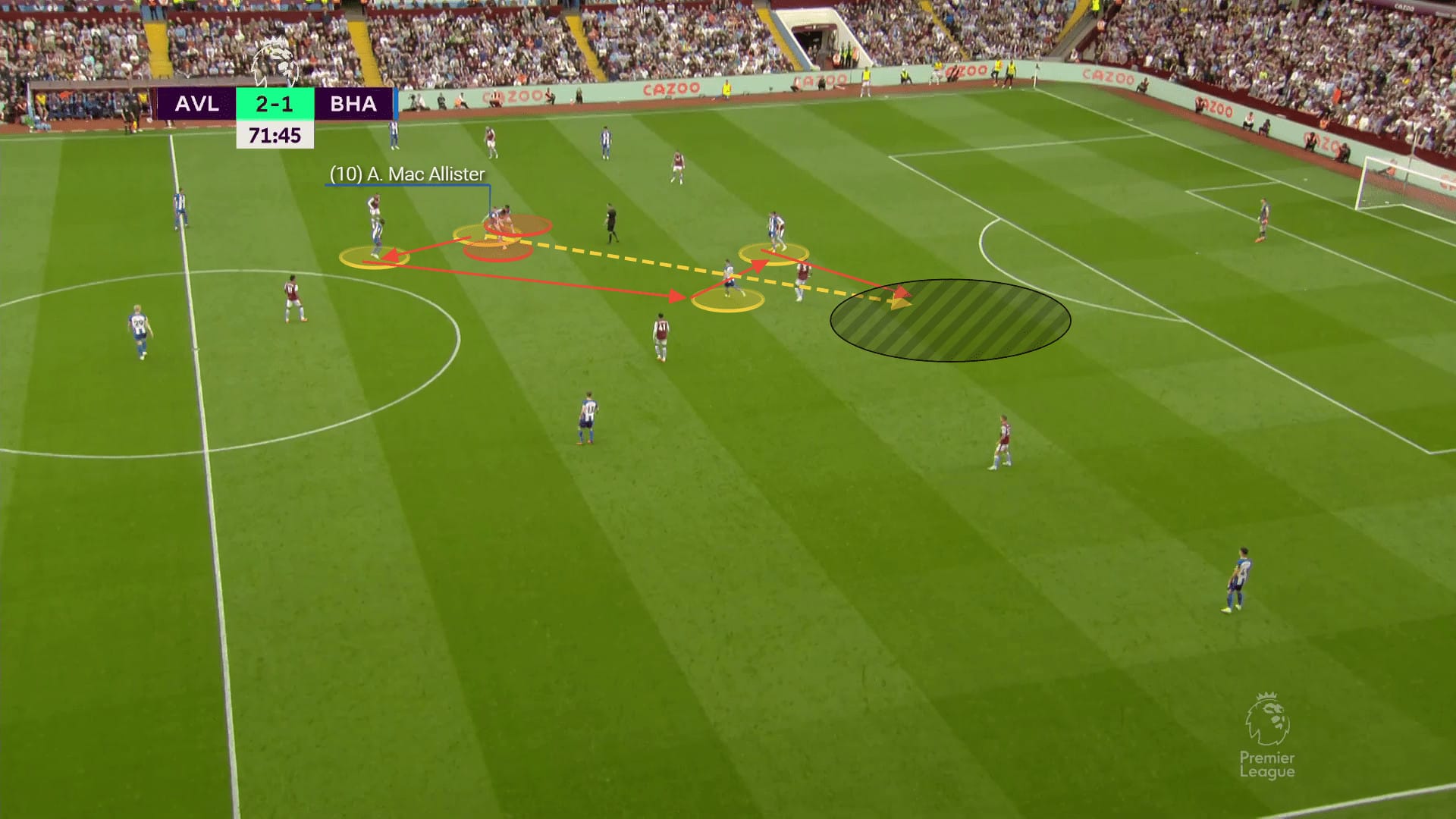
Defensively, they will need better coverage this season, which is already partly secured as both new additions in midfield perform exceptionally well defensively. They can contribute with high regains, which is beneficial for the team’s counterpressing efforts. That first and second line of protection will be essential for the team’s success, especially in need of new defenders.
The team’s awareness needs to increase as they were often late with their defensive positioning, leading to many fouls in dangerous areas and conceding from set plays.
How Can Klopp Use Mac Allister?
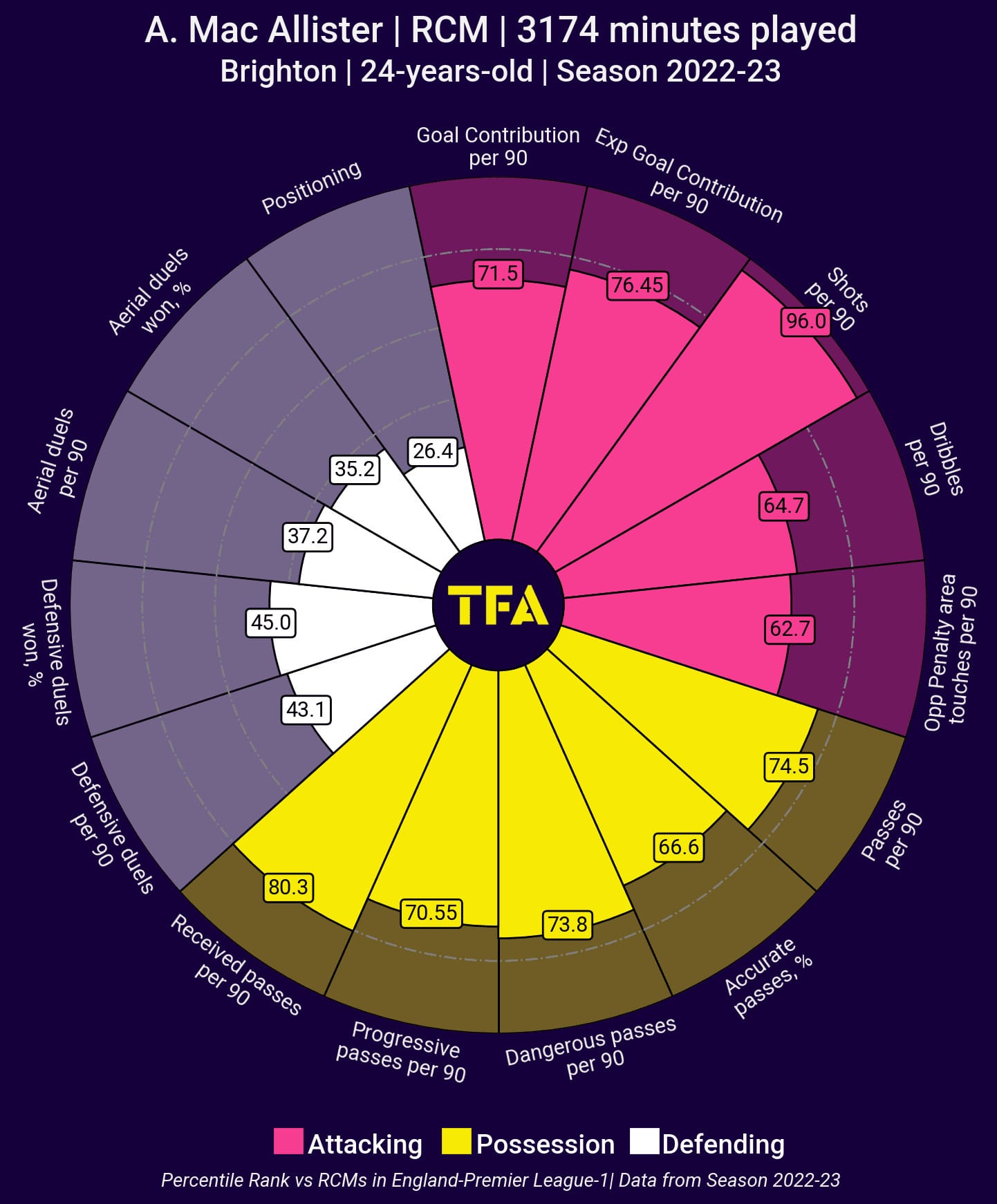
Mac Allister can be used in different roles depending on the team set-up and strategy. He can be used anywhere centrally, from a deep midfield position, through sitting in a double pivot to moving into an attacking midfield one.
His versatility and contribution both in attack and defensively give Klopp the opportunity to couple him up with different players in midfield without risking their performance in either phase.
While it sounds a little adventurous, the manager could benefit from a 4-3-3 set-up with a midfield three of Mac Allister, Szoboszlai and Alexander-Arnold, with the Hungarian having a more advanced position in front of the others.
This way, Klopp can get the most out of all three players as they are all attack-minded but can successfully cover depth for each other during defensive transitions.
Mac Allister moves between the lines and can successfully break them with his passing. His ability to carry the ball to the advanced areas but also to directly threaten the goal can combine well with Alexander-Arnold’s and Szoboszlai’s runs and give them a chance to do more creative combinations on the edge of the final third while freeing up space for the attackers. As his pass map shows, he orchestrates play quite well and covers a lot of space with his movement and passing.
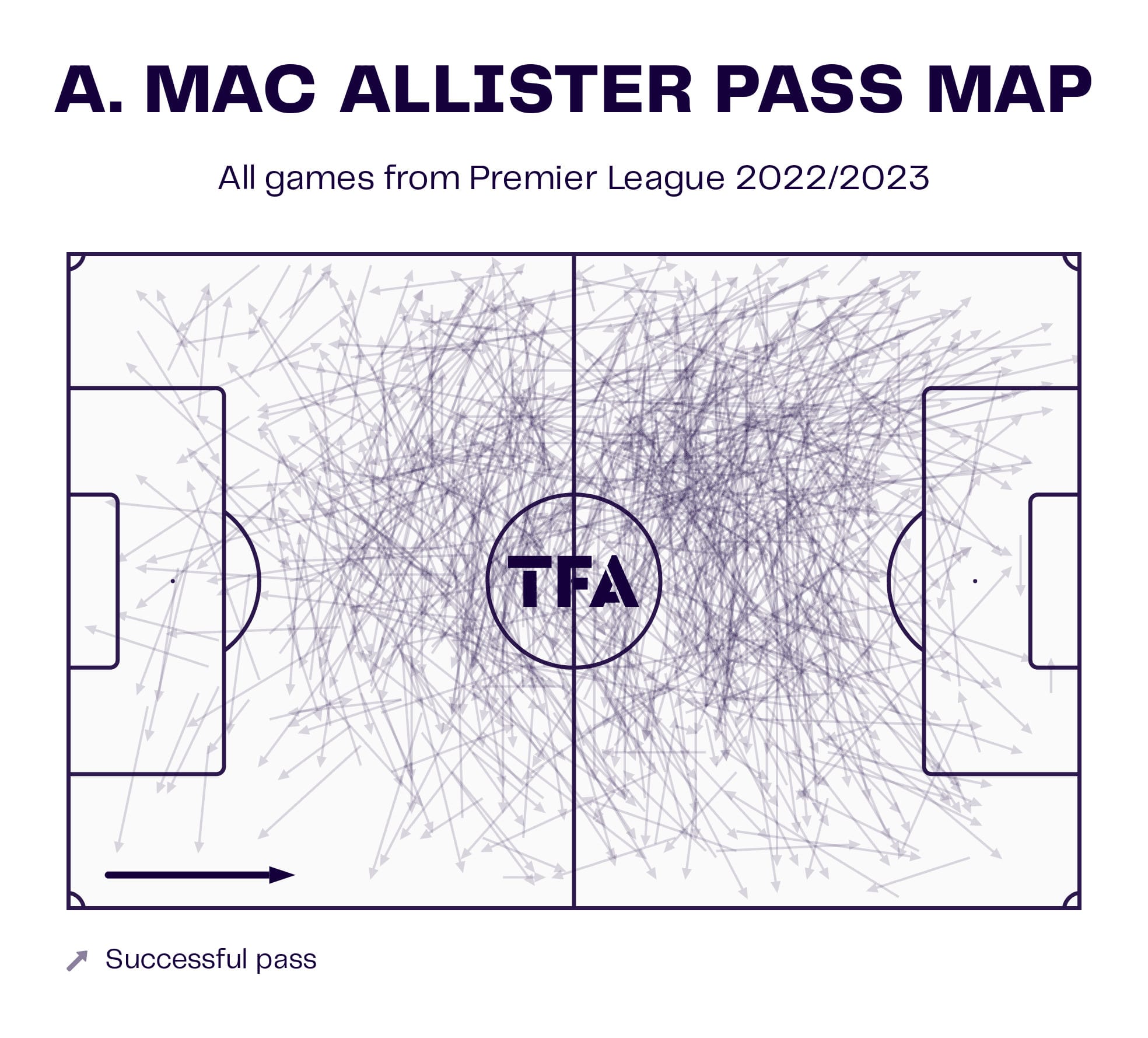
His vital work under pressure is highly valued and will be critical for the Reds, especially in improving their negative ball loss numbers. His awareness of space and the opposition’s positioning allows him to confidently carry the ball up the pitch, as shown in his “penetrating carriers” map. His tactical intelligence is supported by a strong-decision making, which causes him to be an excellent option for orchestrating Liverpool’s fast-paced play.
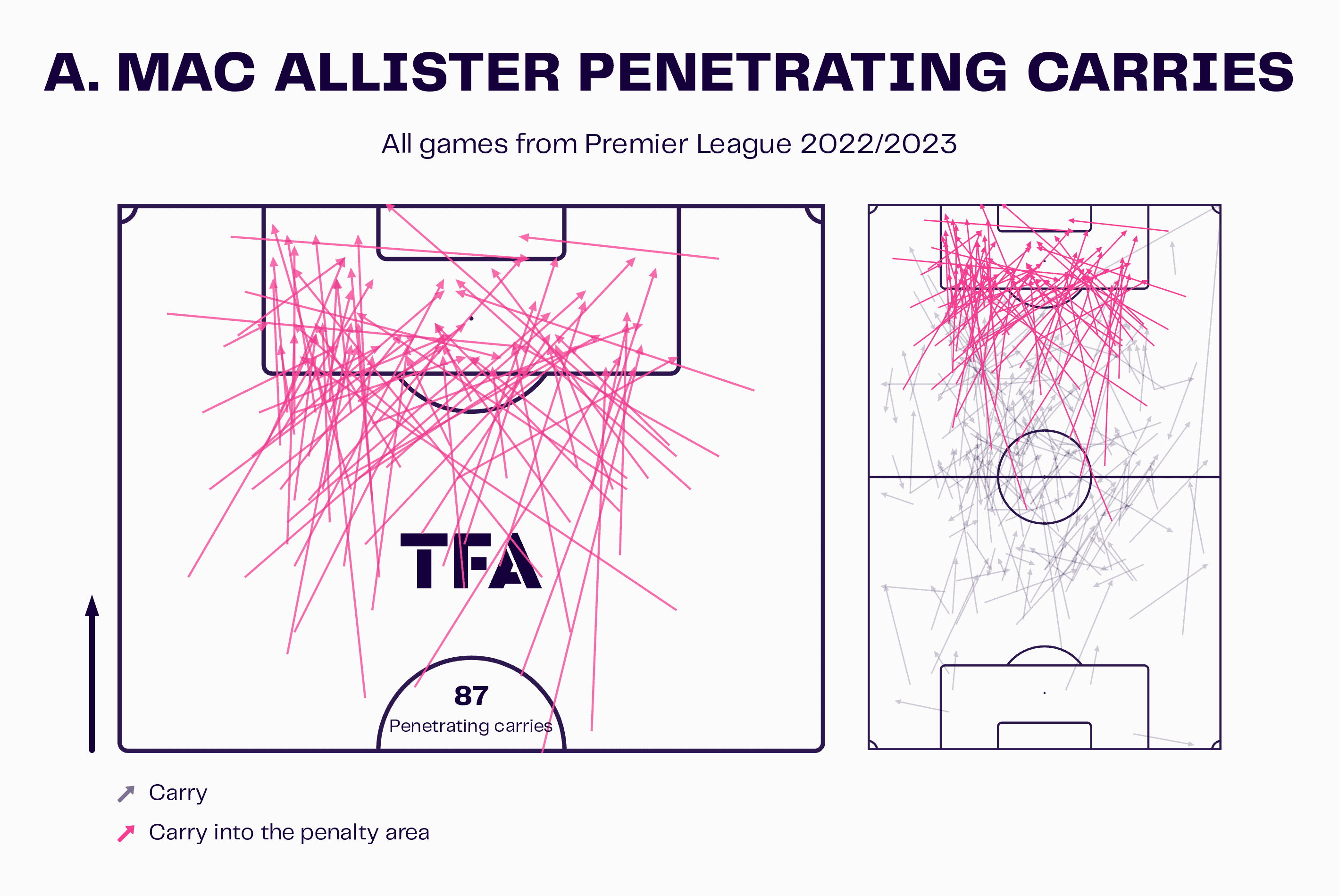
While he can succeed in a high-tempo environment, his ability to hold onto the ball can help the team occasionally slow down and build up patiently to get the most out of the situation.
Mac Allister’s ability to threaten the goal is impressive as well. He averaged 2.3 shots per 90 last season for Brighton and can be very beneficial for the Merseyside club, mainly thanks to his high regains, which allow him to attack directly.
If coupled with Alexander-Arnold in midfield, his defensive stability will give his teammate the freedom to move forward without leaving gaps, as Mac Allister can successfully cover for him.
This setup, however, brings the need for a new right-back signing on the agenda.
The discussion about having Alexander-Arnold in midfield comes from his changed role in some games. As we will explain in the next section, making him move to the central areas and overloading the midfield helped the team both in and out of possession and made the player focus more on his runs and contribution to the attacking movement.
Key Player: Trent Alexander-Arnold
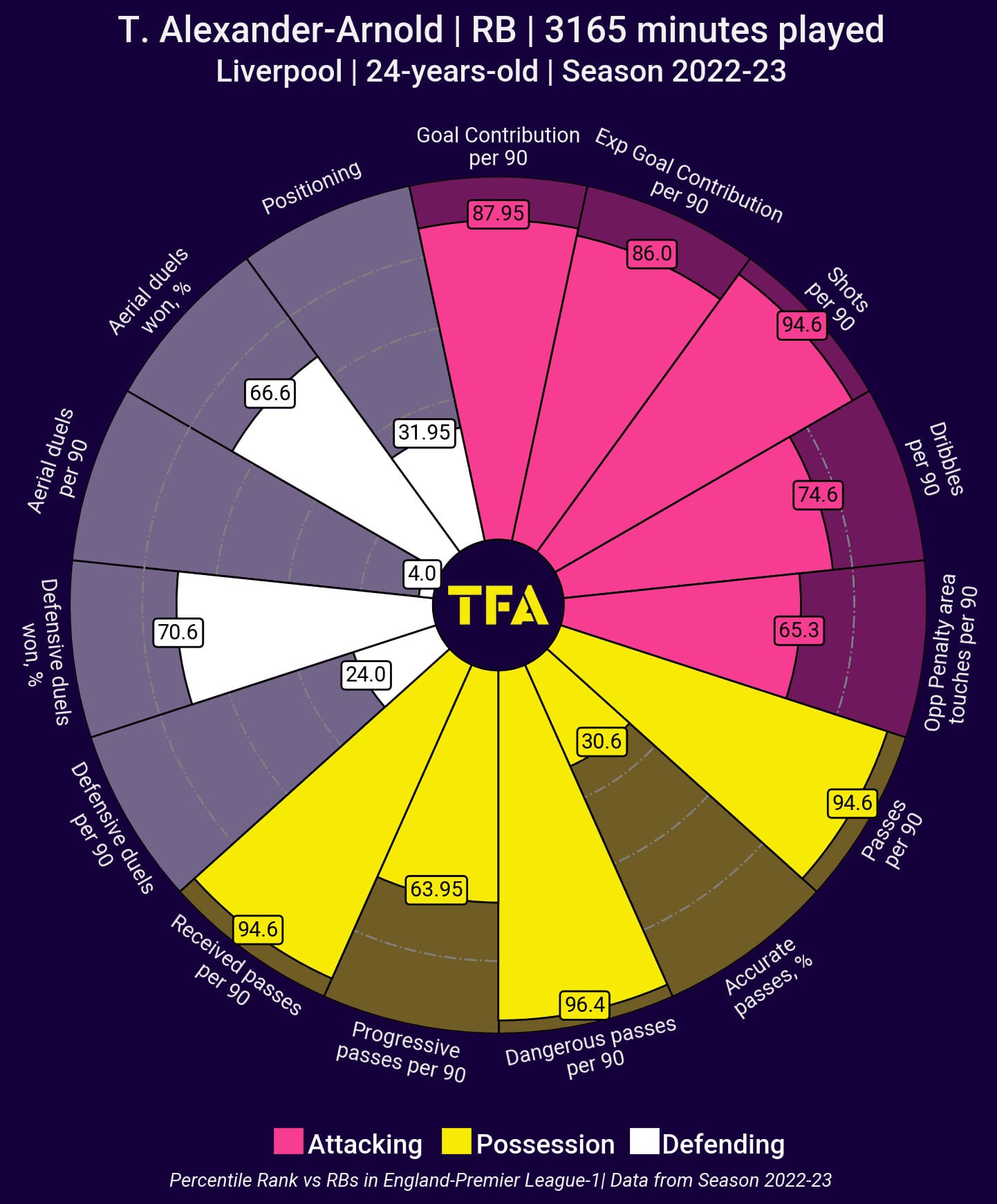
Alexander-Arnold can quickly become Liverpool’s player of the season if he adopts this new central role. He can become a different player with his passing, runs, and ability to switch play. Playing centrally gives him more space to operate in and play on his potential instead of being limited by the touchline and having constant attacking threat against him, testing his defensive abilities.
Even if Klopp doesn’t entirely move him into a midfield position, he will most probably do it in possession, adopting more of a three-at-the-back formation in possession, with Alexander-Arnold moving centrally as a playmaker and then dropping back so he can still fulfil his defensive responsibilities.
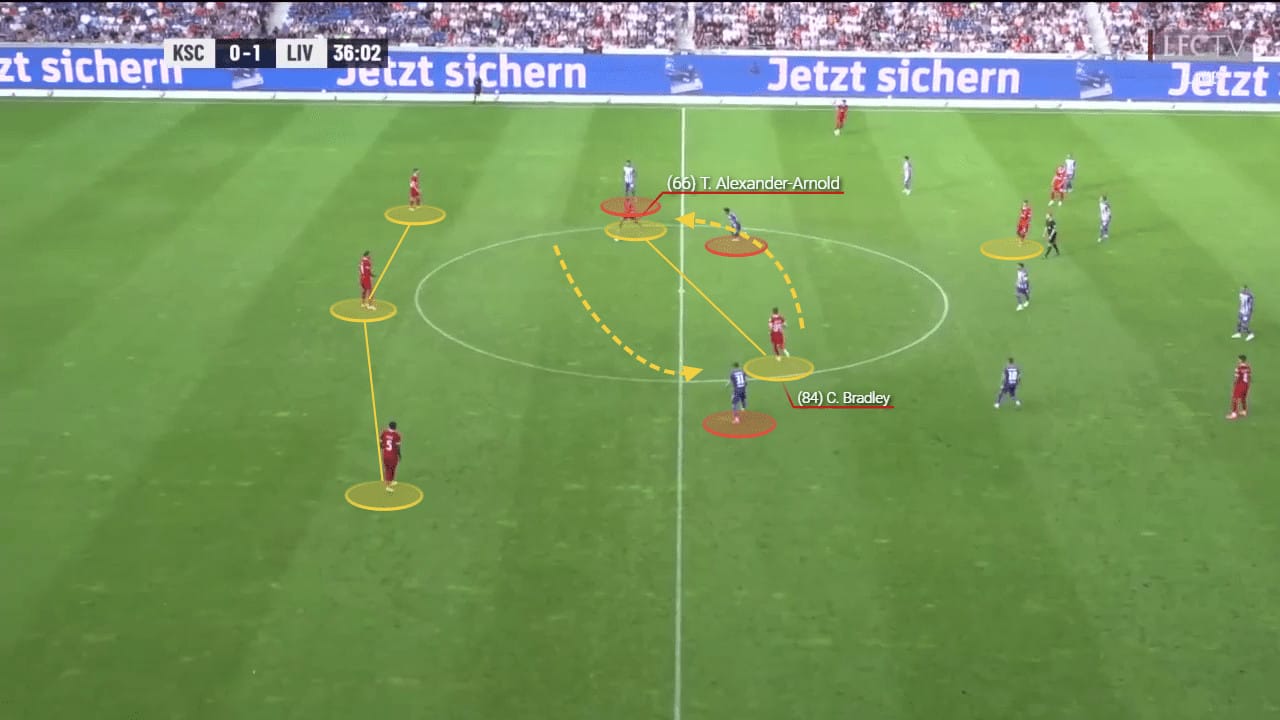
This way, he won’t be moving too far up the pitch but will support the team from the central areas. Centrally he has more options for a pass, can easily switch play to the underloaded areas and can advance with or without the ball to open spaces for his teammates.
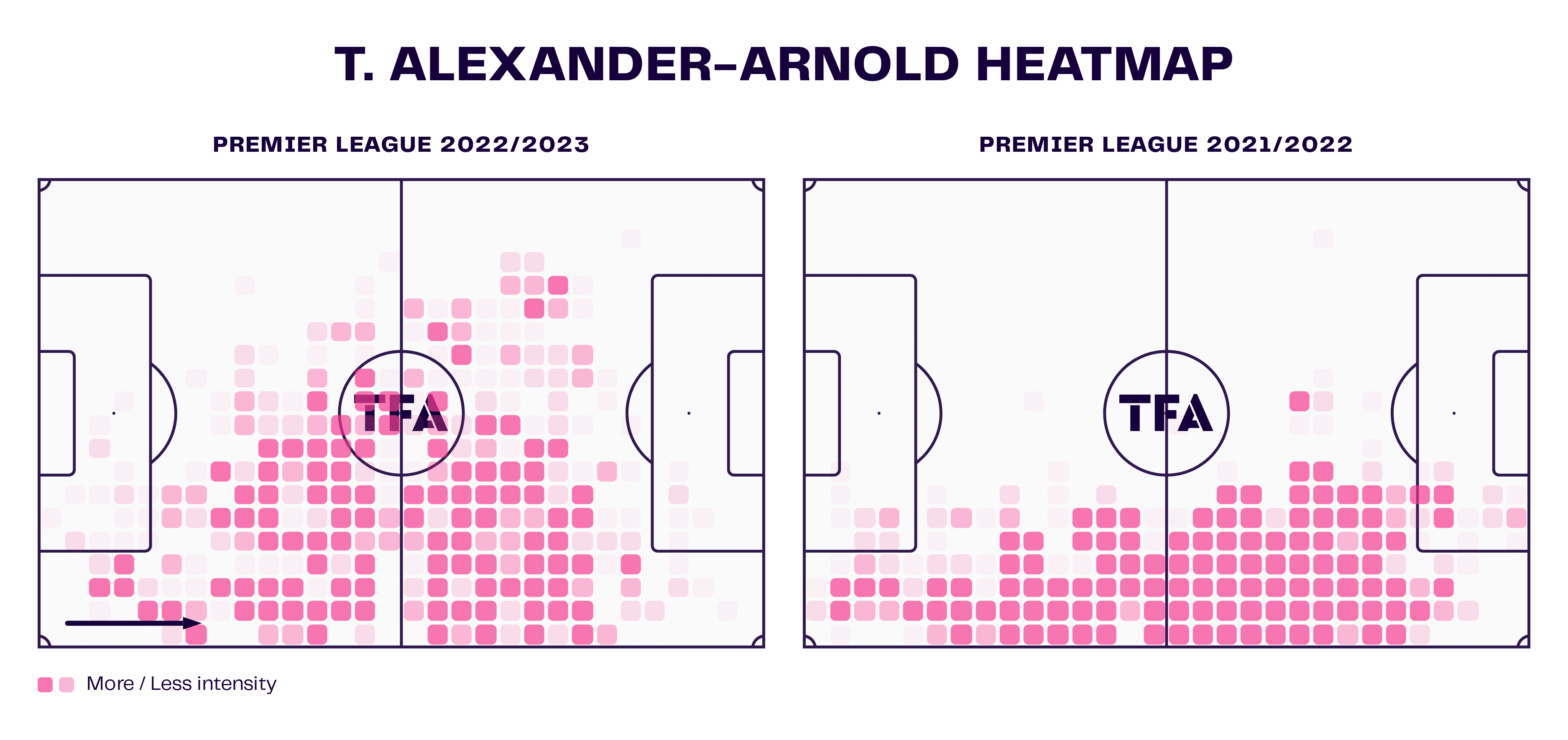
An analysis of his heatmaps from the last couple of seasons, shows the difference last term, where he had much more creative freedom and spent more time in the central areas. That affected his cross-frequency and accuracy a tad, but it was compensated by more creative passing and better ball distribution.
One to Watch: Dominik Szoboszlai
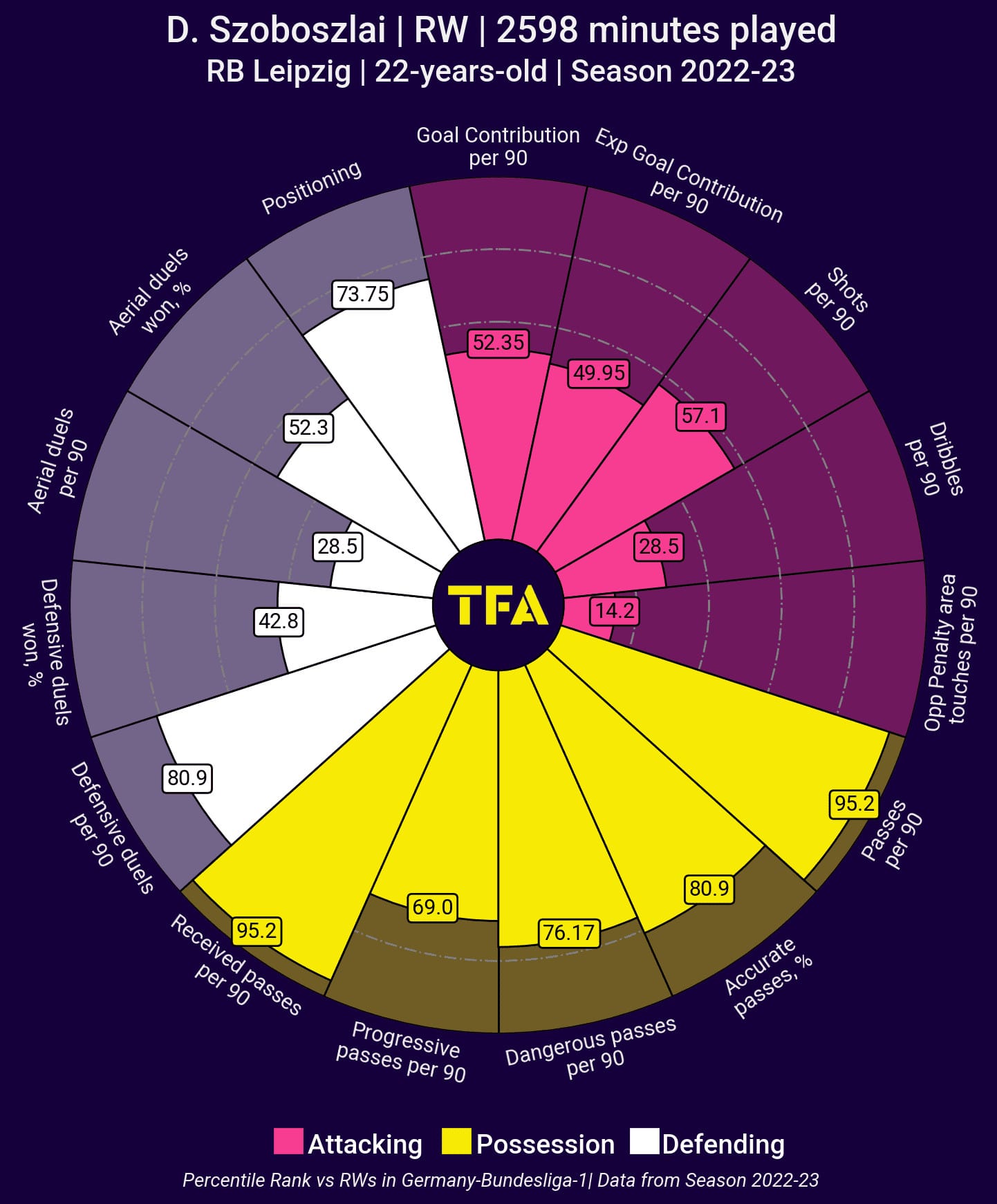
As already mentioned, Szoboszlai can be crucial for Liverpool if given the chance to prove his potential. His tactical intelligence, spatial awareness and composure are the reason for successfully breaking lines with his movement and passing both out wide and in the half-spaces, as shown in his “ball progression” map.
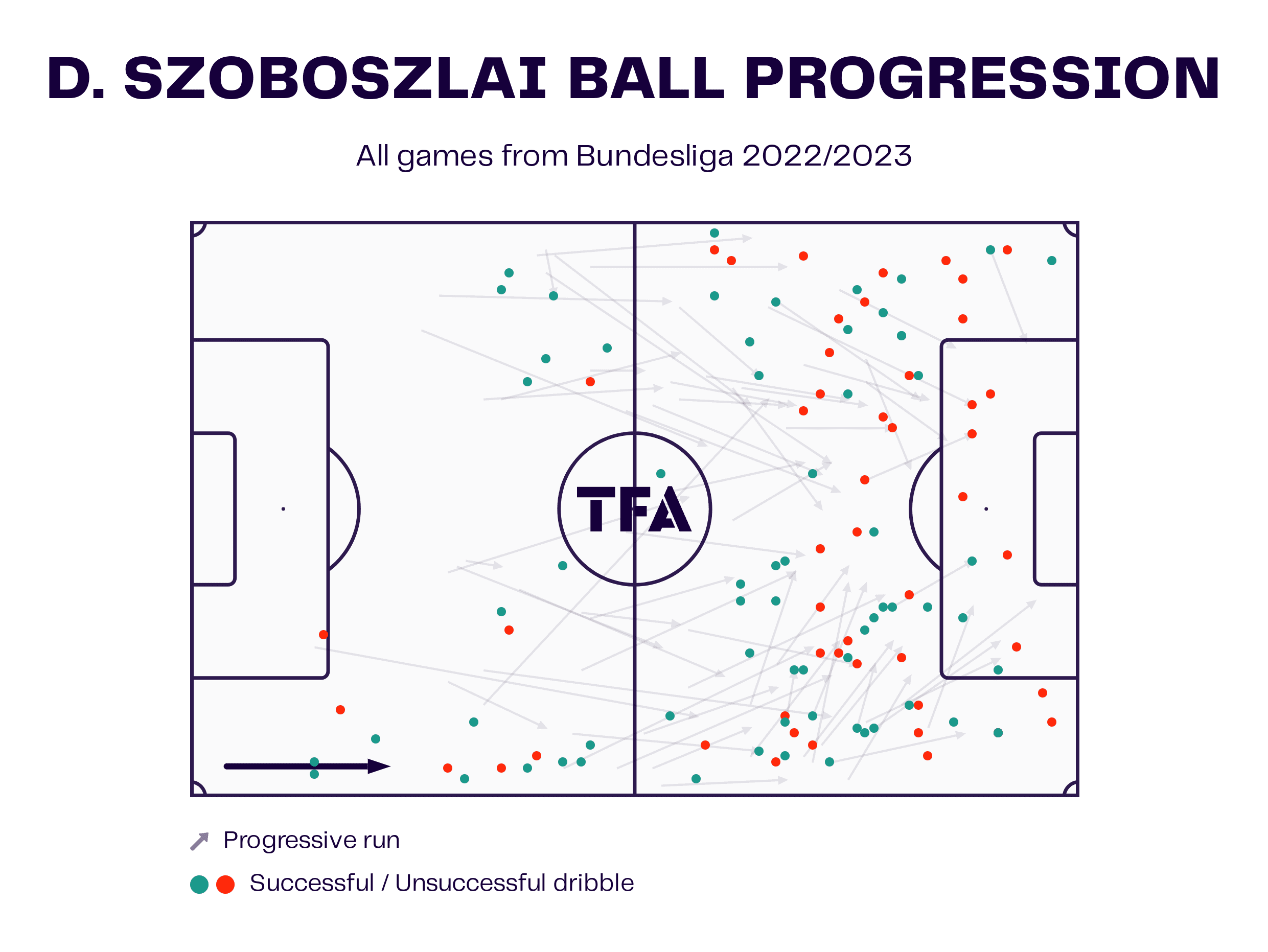
His work under pressure will allow the Reds to advance the ball successfully, as the Hungarian doesn’t shy away from 1vs1 situations. He constantly tries to find a way to threaten the goal both individually or through lay-offs for his teammates. Considering the team’s lineup upfront, Szoboszlai seems the perfect fit to increase their creativity in the final third and support his teammates with crosses or through balls, as shown in the image.
Upon receiving the ball, the midfielder had already identified the free area and Henrichs’ availability. Once he received it, he immediately sent a through ball and outplayed the defenders.
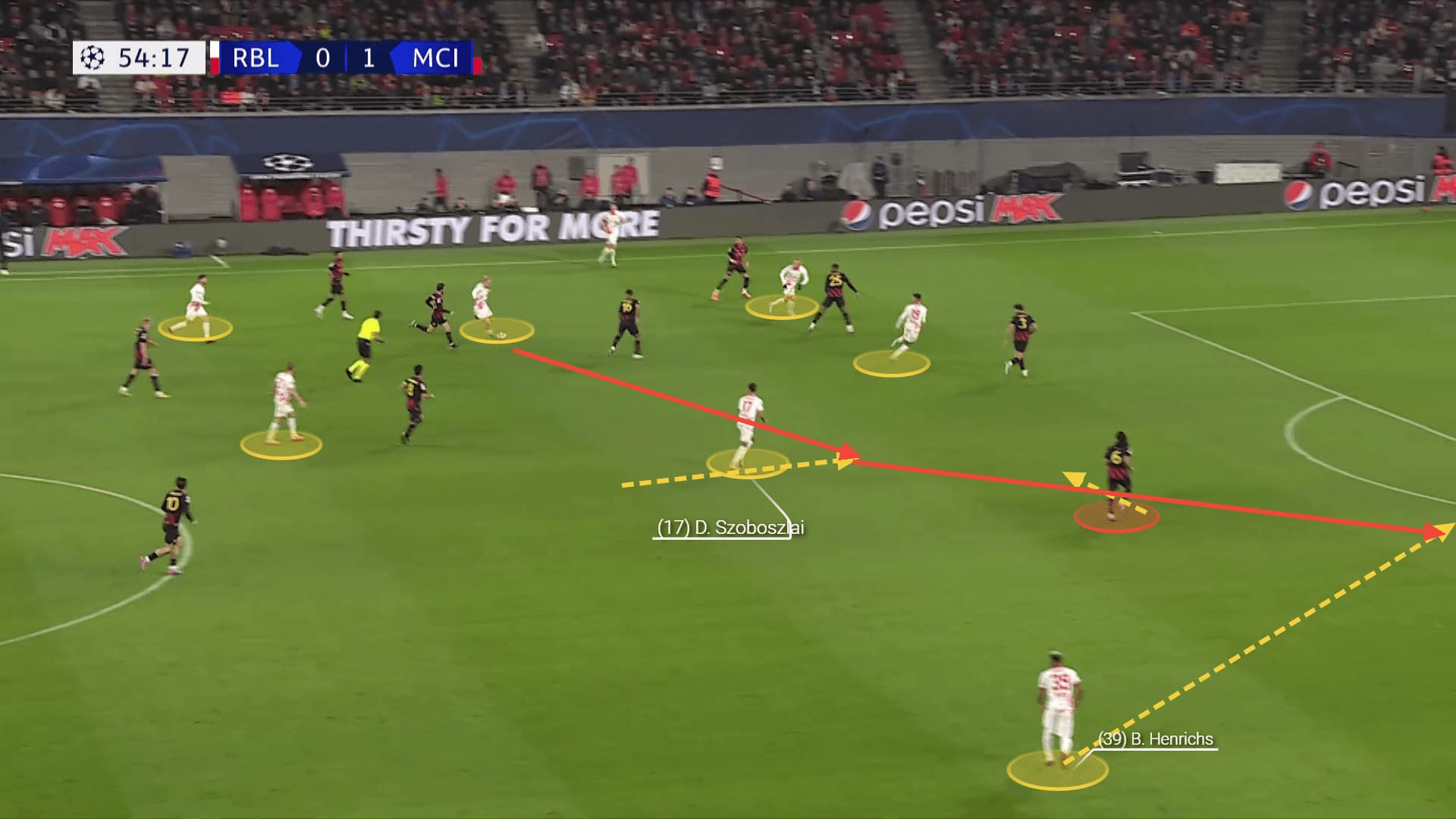
As we explained in our tactical analysis, his presence behind the attackers will engage opposing players, which will immediately free up spaces for his teammates to exploit. His ability to move both centrally and out wide can make a difference in and around the box, and it gives the opportunity for the team to make more positional interchanges in their efforts to penetrate.
Similarly to Mac Allister, he can successfully provide a direct threat to the goal. However, he prefers moving in sync with his teammates and supporting their movement more.
Klopp can rely on him as an even more excellent defensive protection as he successfully pins opposing players at the back and disrupts their build-up.
TFA Verdict: 3rd
Players have left, players are fit, new players have come in. Surely all that adds up to us seeing the real Liverpool again this season? Last season finished very strong and it’s easy to believe that momentum will continue into this campaign. But, they have more new parts to gel together than Arsenal which is why I can see them finishing third and not challenging City at the top – but finishing higher than United will be pleasing for the fans.

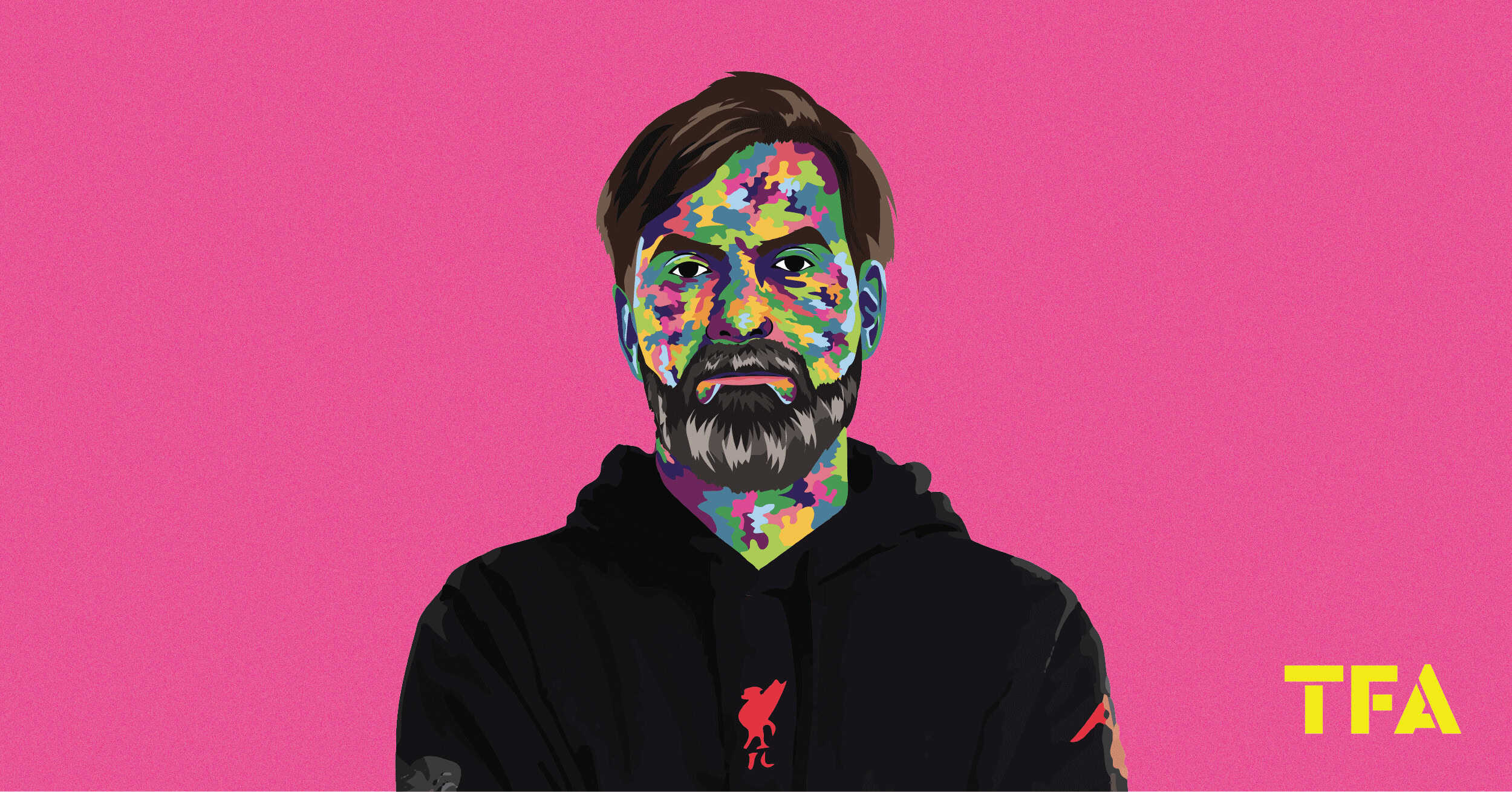




Comments